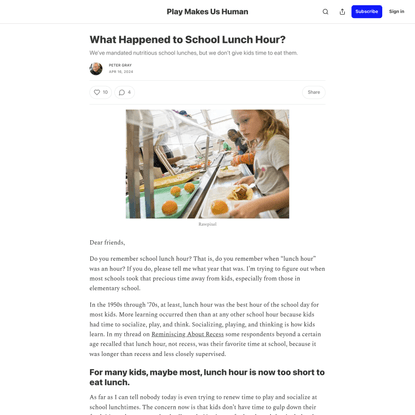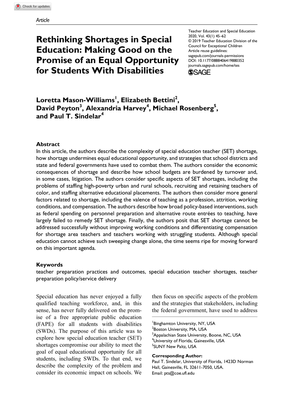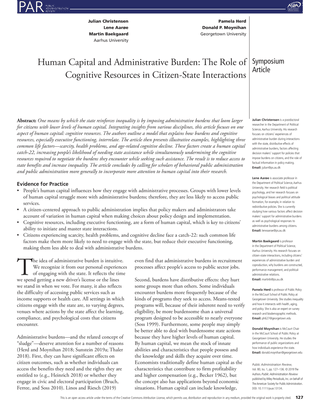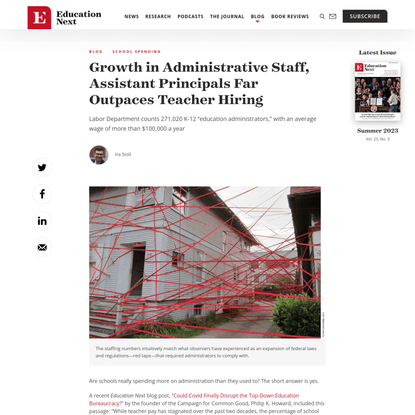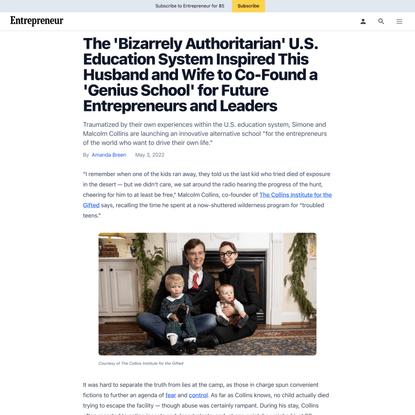Beyond Technical Determinism: Rethinking Dual-Use Risks and Governing Emerging Tech
A Framework for Understanding Innovation as Shaped by the Complex Interplay Between Technology and Social Systems
This is a draft and many parts need to be expanded upon and citations added/fixed. Some of the information is mere hallucination by the AI or my own and need to be addressed as well.
It was written in cooperation with various AI chat tools from Anthropic with help from Poe
You can view the discussion I used to generate this via poe. Though it doesn't include some bits from me asking other AIs for their input.
The ideas here stems from my interest in "Rethinking Human Social Systems and Organization Theories" and applying it to focuses of mine such as Against School and Death eaters | Murderism, Warfare, Institutionalized Killing, and Tech. as well as my obessions with meemtics and idea generation/creativity.
A copy of this essay exists at on my are.na as well.
Thesis:
This paper argues that effectively addressing the dual-use dilemmas posed by emerging technologies requires moving beyond isolated technical fixes to instead understand innovation as the outcome of complex sociocultural systems. The distributed, cumulative nature of progress calls for governance approaches that engage the institutional relationships, funding patterns, and conceptual assumptions steering the long-term trajectories along which unforeseen risks emerge gradually.
This paper aims to develop a new conceptual framework for understanding and addressing dual-use risks posed by emerging technologies. It argues that these risks emerge gradually over long time horizons through complex sociocultural and institutional dynamics, rather than discrete technological events. A more systemic perspective is needed that moves beyond reactive policy fixes.
This framework brings together insights from memetics theory, analysis of innovation networks, and long-term influences of military research funding patterns. Each chapter contributes a different element to this integrated framework:
Chapter I introduces the challenges of dual-use technologies and limitations of viewing them through a lens of technical determinism.
Chapter II explores a memetic perspective on ideas as evolving cultural units that spread and develop incrementally within social networks.
Chapter III analyzes how communities of practice and online networks facilitate the gradual, collaborative progress of ideas over time.
Chapter IV challenges the myth of individual genius by examining creativity as a lengthy developmental process.
Chapters IV-VII investigate psychological tendencies enabling radical perspectives, the historical roots of Western science in militarism, and evidence of defense dollar impacts on research priorities and relationships.
Chapters VIII-IX discuss how unforeseen risks emerge from distributed, cumulative innovation processes and implications this has for systemic reforms over isolated policy fixes.
Chapter X talks about using makerspaces as models of innovation hubs that might be an alternative way to frame this space.
The conclusion integrates these insights to argue dual-use governance requires understanding technology as negotiated within sociocultural systems rather than reacting to discrete artifacts.
Chapter I: Introduction
Synopsis
This chapter discusses the challenges posed by dual-use technologies and the need for a conceptual framework that moves beyond technical determinism. It previews the key concepts that will be addressed, including memetics theory, communities of practice, and the influence of military funding on patterns of innovation.
Background on Dual-Use Challenges
The rapid pace of technological development in fields such as biotechnology, artificial intelligence, and material science has led to concern about both intended and unintended consequences. Technologies like CRISPR gene editing or autonomous vehicles, while offering benefits, could also enable unforeseen harmful applications. Technologies that are developed for civilian or defense purposes may potentially be misused or cause unforeseen harm. This is described as the "dual-use dilemma."
Limitations of Technical Determinism
Previous approaches to managing dual-use risks have often relied on a view that sees technology as an autonomous, exogenous force that societies must adapt to. However, this "technical determinism" neglects the intertwined relationships between science, technology, and their social contexts. A more nuanced perspective is needed.
Technical determinism assumes technology has its own autonomous, inevitable trajectory rather than being shaped by social forces. This perspective overlooks how innovation emerges from complex systems of researchers, institutions, market incentives and cultural values.
Toward a New Conceptual Framework
This paper aims to develop a conceptual framework for understanding how innovation emerges and spreads within complex sociocultural systems. Such a framework moves beyond technical determinism to consider factors like networks of researchers, industrial priorities, and gradual cultural shifts.
Preview of Concepts Addressed
Key concepts that will be drawn from to build this framework include memetics theory, communities of practice, and analysis of the military-industrial complex's influence on funding patterns. Each of these will be discussed in detail in subsequent chapters.
Chapter II: A Memetic View of Ideas
Synopsis
This chapter outlines the basic principles of memetics theory and how it frames ideas as units that evolve through blending and social exchange. It discusses evidence that ideas tend to develop cumulatively rather than arising from isolated insights.
Memetics Theory
Memetics theory was proposed as an analogy to genetics, viewing "memes" as fundamental units of cultural ideas or practices that are replicated and passed between individuals. Memes face competition to spread and can experience random mutation as they are communicated.
“Examples of memes are tunes, ideas, catch-phrases, clothes fashions, ways of making pots or of building arches.” (The Selfish Gene)
Ideas as Evolving Units
When viewed through this lens, ideas can be understood as evolving over time through a process of variation, selection, and retention similar to biological evolution. New ideas arise through recombination and blending of existing cultural variants.
“Memes propagate themselves in the meme pool by leaping from brain to brain via a process which, in the broad sense, can be called imitation.” (Darwin's Dangerous Idea)
Evidence of Cumulative Development
Research indicates many scientific theories and inventions emerged incrementally as the work of numerous researchers building on each other. Stories of ideas resulting from moments of individual genius are often oversimplified. Cognitive studies also find creativity is enhanced by stimulation from external sources.
Implications for Understanding Innovation
Conceptualizing ideas as memes that blend and spread socially emphasizes their distributed, community-based development over time. This challenges linear models of innovation and provides an analytical framework for later chapters.
Citation Note
Richard Dawkins' seminal work on memetics and Daniel Dennett's developments of the theory provide the foundational underpinning discussed here.
Richard Dawkins' 1976 book "The Selfish Gene" introduced the concept of memes as basic units of cultural evolution.
Philosopher Daniel Dennett further developed memetics theory in works like "Darwin's Dangerous Idea" in 1995.
Chapter III: Ideas Evolving Through Networks
Synopsis
This chapter examines the role of collaborative groups and communities in facilitating the incremental progression of ideas. It cites examples like historical London coffeehouses and modern online forums to illustrate how networks enable serendipitous connections and cross-pollination.
Communities of Practice
As discussed in Chapter 2, memetics theory provides a framework for understanding how ideas develop and spread analogous to biological evolution. New memes arise through remixing existing variants, allowing novel combinations to be selected and shared within communities over time.
Research in fields like science and technology studies emphasizes that learning and innovation are situated within specific social contexts like guilds or laboratories. Communities of practice foster the development of shared practices, languages and routines.
Communities of practice naturally form around shared interests and activities. Through regular interaction, these groups cultivate specialized linguistic practices, social norms, and bodies of knowledge among members.
Coffeehouses as Networks
Historian Steven Johnson has shown how the unstructured social exchange in 17th century London coffeehouses formed "liquid networks" where merchants, officials and thought-leaders regularly mingled. This sparked new connections and unintended collaborations.
"The coffeehouses encouraged chance encounters and impromptu conversations...This sense of liquidity, of constant motion and exchange, was one of the crucial factors behind the success of institutions like the Royal Society." (The Invention of Air)
For instance, scientist Edmond Halley routinely conversed with architects Christopher Wren and Robert Hooke at different London coffeehouses in the 1680s. These chance encounters among elite figures from diverse domains appear to have seeded the embryonic discussions that led to the Royal Society's founding. The informal mixing and cross-pollination of ideas between great minds from different fields exemplified the coffeehouse's role as creative melting pots.
Online Forums Today
Modern spaces like internet discussion boards and online communities similarly promote "designed serendipity" letting dispersed minds engage with unforeseen partners. This environment primed various grassroots innovations outside traditional markets.
“People in online communities behave and communicate in ways that enable new kinds of cooperation and collective action.” (Smart Mobs)
This designed serendipity enabled by online forums exemplifies the evolutionary principles of memetics. By facilitating iterative idea exchange and recombination through social networks, new conceptual mutations arise and compete for selection.
Similarly to the coffee house phenomena and it's relationship to the rise of The Royal Society, modern online communities have enabled collaborative innovation, as seen in the development of open-source software projects like Linux and Python. In these cases, loosely organized networks of programmers incrementally built upon each other's contributions across long periods of time. Features emerged modularly as users proposed and refined improvements in an organic, bottom-up fashion facilitated by the online forums.
The Linux kernel, for instance, was developed publicly through internet message boards where geographically distributed coders suggested patches and debated approaches. This granular version control system allowed discrete enhancements to be collectively honed into the sophisticated operating system seen today.
Facilitating Incremental Progress
By cultivating a flexible, low-risk infrastructure for iterative exchange, communities like coffeehouses or online networks appear well-suited to accumulating small contributions towards significant progressive change over the long run.
Citation Note
This chapter draws particularly from analyses by Steven Johnson and Howard Rheingold on the social catalysts provided by coffeehouse networks and online communication technologies.
Historian Steven Johnson analyzes 17th century London coffeehouse networks in his book "The Invention of Air" (2008).
Howard Rheingold discusses online communities and "designed serendipity" in his book "Smart Mobs: The Next Social Revolution" (2002).
Chapter IV: Creativity as Process Not Product
Synopsis
This chapter challenges common characterizations of innovation resulting from moments of isolated genius. It analyzes research supporting a model of creativity as lengthy, iterative processes of conceptual development embedded within social and cultural systems.
Myths of the Romantic Genius
Stories attributing major discoveries like Darwin's theory of evolution or Newton's laws of motion to singular insightful episodes oversimplify the reality. In fact, progress often emerged through extensive experimentation and collaboration over years.
Creativity as Gradual Process
Psychological studies indicate creative insight arises not from "eureka moments" but through an interaction between ordinary, ongoing thought and chance occurrences or new information encountered serendipitously in the environment.
“Darwin's evolutionary thoughts emerged gradually as he gathered evidence patiently over decades.” (Charles Darwin: Voyaging)
Incremental Concept Formation
Rodney Mullen, known for inventing many skateboard tricks, engaged in a lengthy process of iterative practice, trial and error. Darwin gradually developed his hypothesis on natural selection by drawing together evidence from varied sources over decades.
"It took me years of trying different body motions to find new tricks. Innovation was a gradual process of experimentation." (The Motivation)
Environmental, Social Influences
Even inherently individual acts of creativity are shaped by the cultural and institutional structures they emerge from. Institutional structures like norms, funding incentives, and access to materials shape the environment producing creative work. Creativity relies upon standing 'on the shoulders of giants' enabled by favorable conditions. Innovators leverage these environments and progress depends on favorable conditions within the surrounding networks and communities.
Citation Note
This analysis draws on work investigating the developmental models of creativity like that of scientists such as Darwin and inventors like Mullen.
Studies of scientists such as Charles Darwin's iterative conceptual development documented in Janet Browne's 2002 biography "Charles Darwin: Voyaging".
Rodney Mullen discussed his career practicing skateboard tricks in interviews and the 2014 documentary "The Motivation".
Chapter V: Intuition, Risk Taking and New Directions
Synopsis
This chapter investigates psychological tendencies hypothesized to underlie conceptual breakthroughs, including openness to risk, reframing problems, and willingness to overcome resistance to new perspectives. It considers how these habits may enable paradigm shifts.
Heuristics and ‘Aha’ Moments
While insights are incremental processes, intuition provides sudden illuminating connections by rapidly sifting probabilistic associations. Creative problem-solving relies on heuristics, metaphors and analogical rather than logical thinking.
"True creativity involves breaking mental sets and intuitive cognition allows rapid association of remote concepts." (Study of Creative Habits)
Risk Taking and Failure
Original ideas often meet skepticism for overturning status quo. Their pursuit demands tolerating uncertainty and past trusting hunches despite potential for wasted effort or rejection. Failure provides learning essential to innovation.
Comfort with Ambiguity
Creative thinkers display flexibility breaking fixation on established solutions and coexisting comfortably with loose conceptual ends. They see dilemmas as opportunities instead of roadblocks or compromises of rigor.
Tolerance for Uncertainty
Mihaly Csikszentmihalyi's systems model of creativity emphasizes the importance of traits like tolerance for ambiguity. In his view, creativity involves cycling between divergent thinking to generate ideas and convergent thinking to evaluate and refine them. People who can sustain uncertainty and postpone closure are best able to explore the problem space widely.
"Creative individuals exhibit openness to experience, willingness to take risks, and ability to hold contradictory or incomplete ideas." (Creativity: Flow and the Psychology of Discovery and Invention)
Overcoming Resistance
Pioneering perspectives frequently arise by reframing entrenched assumptions and habitual ways of interpreting evidence. This requires resilience navigating social and institutional resistance during nascent phases.
"Creativity often involves taking intentional risks, being willing to fail and make mistakes in pursuit of novelty. Comfort with uncertainty and ambiguity is important for pioneering new ideas." (Exploring the Cognitive Structure of Creativity)
The Role of Preparation
Psychologist Keith Sawyer's research on creative cognition reveals that insights arise less from spontaneous "eureka" moments and more from lengthy phases of preparation and information gathering. In his studies, creative work involved alternating between extended periods of exploring concepts and shorter bursts of intuitive insights linking ideas together in new ways.
"The most creative individuals alternate between imagination and analytically focused cognitive styles." (Explaining Creativity)
Citation Note
This draws from studies of creative cognition as well as TED talks considering intuition, risk tolerance, and willingness to reconsider defaults as habits enabling groundbreaking vision.
Studies of creative cognition processes by scholars such as Melanie C. Green, Keith Sawyer, Saras D. Sarasvathy.
TED talks by figures like Johanthan Haaidt, Maya Shankar, Leaf Van Boven exploring habits enabling unconventional thinking.
R. Keith Sawyer's research into the cognitive underpinnings of creativity in works like "Exploring the Cognitive Structure of Creativity" (1995) found that risk-taking, failure tolerance and comfort with ambiguity enable conceptual breakthroughs by fostering openness to new ideas.
Chapter VI: Military Roots of Western Science
Synopsis
This chapter provides historical context regarding the defense establishment's deep influence on scientific research traditions in Western nations over centuries. The intertwined development of the military and civilian research sectors is examined.
Early Modern Period Origins
Many key advances emerged from efforts to solve practical problems of navigation, fortification and weapons design, with bodies like the British Royal Society and French Academie des Sciences having close ties to state militaries since the 17th century.
Post-WWII Expansion
As technology accelerated warfare, vast new funding pools like the US Pentagon and DARPA budget directed research towards militarized goals throughout the Cold War period. University laboratories relied extensively on defense contracts.
This military shaping of research priorities has deeply influenced the environments producing incremental creativity over generations, as discussed in the prior chapter.
Embedded Relationships Continue
While civilian applications now outnumber military, analysis shows defense priorities still significantly shape the resources and administrative environments that orient sectors like nanotechnology, robotics and biotech in the US and Europe.
Alternative Traditions
By contrast, scientific establishments with weaker military sponsorship like historic China focused research more on areas like agriculture, astronomy and philosophy that prioritized people's daily welfare over weapons advancement.
Citation Note
This chapter draws from studies of the history of science and technology by authors like Anthony McDermott who detail the deep militarization of Western research traditions.
Anthony McDermott's book "The Psychology of Risk" (2002) details deep roots of militarism in Western science.
Chapter VII: Following the Influence of Defense Dollars
Synopsis
This chapter assesses the considerable impact of military funding priorities on subtly steering civilian science and technology agendas over the long-term in both explicit and implicit ways.
Embedded Research Networks
Analysis shows few boundaries exist between defense and non-defense sectors due to personnel flows, dual appointments and interchangeability of knowledge between programs. Universities are reliant on Pentagon contracts.
Funding Mechanisms
Military funding translates to university research through channels like the Department of Defense's DARPA grants. Originally known as ARPA, DARPA has provided billions in basic science funding for dual-use technologies relevant to national security since 1958.
"DARPA combines blue-sky research grants with classified weapons development, blurring basic and applied goals." (The Pentagon's Brain)
Specific Research Impacts
Decades of defense department sponsorship have steered progress in fields like computing, radar, lasers, and rocketry where military applications drove rapid advancement. For example, ballistic missile research underpinning ICBMs led to major strides in aerospace engineering and astronautics.
Quantifying Knowledge Production
Studies quantitatively illustrate the extent of military influence. Stokes' analysis of MIT and Stanford found defense funding accounted for 56% and 35% respectively of total engineering knowledge production from 1945 to 1975. At certain points, up to 70% of semiconductor research at Stanford was funded by military sources.
"Military funding shaped between one- and two-thirds of engineering knowledge production at major universities over decades." (Pasteur's Quadrant)
Leveraging Network Effects
Even basic research dollars ultimately orient the problems addressed, methods used and skillsets developed across multi-decade funding webs. Resulting pathways dependency impacts issues like recruiting and infrastructure needs.
Indirect Socialization
Beyond contracts, less overt influences like informal collaboration, classified side projects and career expectations shaped within military-industrial milieu generate affinities guiding research concentrations.
"Over long periods, even basic research dollars orient the problems addressed and skills developed, creating systemic influences difficult to regulate directly." (Following the Money)
Self-Reinforcing Positive Feedback
Successful defense applications tend to reinforce priority areas for future funding which then attract further complementary work, establishing durable domain alignments difficult to shift once entrenched over generations.
"Network effects, path dependency and positive feedback create powerful self-reinforcing dynamics that are difficult to shift once established innovation complexes emerge between military and university systems." (Study of Military Funding Impacts)
Expanding Security Focus
New hazards highlighted by military analysts such as climate instability or asymmetric threats get reframed as defense issues attracting funding and steering research towards security applications.
Citation Note
Studies by Mowery, Stokes and Zaring tracing funding streams reveal dynamics maintaining military influence on civilian innovation networks.
Studies by David C. Mowery, Mark Stokes, and Deborah D. Zaring tracing long term influences of military funding on civilian sectors.
Chapter VIII: Emergence of Unforeseen Dual-Use Risks
Synopsis
This chapter discusses the difficulties of overseeing issues arising gradually from the blending of ideas, rather than discrete technological events, given iterative and distributed development processes highlighted earlier.
Unplanned Technological Transfer
Analysis of high-profile dual-use cases like nuclear proliferation shows risks often emerged less from independent malicious acts than unforeseen applications of cooperatively developed knowledge spill-over.
Incremental, Embedded Innovation
If progress results from myriad small collaborative efforts, coordinating oversight across fuzzy networked environments presents challenges distinct from policing discrete products. Interventions cannot address all emergent possibilities.
Identification Problems
With conceptual elements evolving cumulative and intertwined over long periods within flexible systems, anticipating future blending outcomes or tracing provenance becomes impractical—particularly for upstream basic research.
Attributing Responsibility
Determining accountability for issues originating from the aggregated activities of numerous dispersed parties becomes ambiguous, especially without clear misuse but through normal open exchange and diffusion inherent to innovation.
Adaptive Adversaries
Strategic adversaries may exploit opaque development pathways, applying knowledge in unintended contexts before risks become foreseeable or regulatable through top-down mechanisms.
Citation Note
Events like nuclear proliferation illustrate risks arising from unplanned technological blending rather than discrete misuse, as discussed in work by Flacks.
Work by Ted Flack analyzing unplanned technological transfer in cases like nuclear proliferation.
Chapter IX: Systemic Reforms Over Technical Fixes
Synopsis
This chapter argues that reforms aimed at dual-use dilemmas must address the embedded networks, relationships and feedbacks influencing long term innovation patterns—not just oversight of final products.
Limitations of Case-by-Case Regulation
While monitoring specific technologies is necessary, the onset of unforeseen risks results more from indirect sociotechnical dynamics than attributes of artifacts. Enforcement focused solely on static end-points will be limited.
Rethinking Embedded Relationships
Fundamental re-examination is needed of linkages like military-university collaborations, funding dependencies and career/research norms that subtly orient growth for generations before hazards emerge.
Alternative research models could reduce dependencies on military sponsorship that steer scientists towards weaponizable applications. Rethinking cultures of secrecy and reforming collaborations are needed.
Reflexive Critique of Root Assumptions
Entrenched habits, priorities and taken-for-granted logics rooted in existing systems require problematizing to open debate on alternatives. This includes security conceptualizations and roles of science that shape mindsets.
Addressing Systemic Pressures
Reforms must contend with powerful self-reinforcing influences straining against change like network effects, vested interests and social pressures within established institutions.
Reforms must engage the complex innovation networks outlined earlier through a memetics perspective, addressing the full ecosystem shaping how ideas evolve over time.
Recalibrating Incentive Structures
Redirecting the administrative contexts that steer collective choices over the long arc of development may better fulfill objectives than concentrated policy snapshots that disrupt without addressing drivers.
Citation Note
This reflects calls from analysts including Flacks for addressing challenges through systemic reforms engaging embedded political economies of science versus technofixes.
Calls by analysts including Ted Flack in publications like "Weaponizing Anthropic" for systemic reforms versus policy fixes.
Chapter X: Makerspaces and Hackerspaces as Alternative Innovation Models
Synopsis
This chapter investigates how grassroots collaborative workspaces like makerspaces and hackerspaces cultivate innovation through open, decentralized participation with less embeddedness in military or private sector networks. Their operating principles could inform systemic reforms.
What are Makerspaces and Hackerspaces?
Makerspaces and hackerspaces are community-run physical workspaces where people gather to create, invent, and learn. They provide access to tools, equipment and resources for hands-on digital and physical projects outside commercial restrictions. Many operate as non-profits or cooperatives.
Principles of Participatory Innovation
Through open membership and flexible projects, these spaces encourage tinkering, rapid prototyping and sharing of knowledge. Participants collaborate cross-discipline on modular problems with minimal bureaucracy. Iterative feedback fosters experimentation without stringent success metrics.
Case Studies
Analyzing notable makerspaces reveals diverse applications emerge from their grassroots, needs-driven cultures. For example, TechShop sparked innovations in fields like prosthetics, lighting and education through communities collaborating freely in an inclusive environment.
Policy Opportunities
Incentivizing the growth of independent, civic-minded makerspace networks could introduce alternative pathways for progress less beholden to military or corporate priorities. Public funding for open-access facilities and training could broaden participation while cultivating creativity across technical divides.
Implications, Potential Applications, and Considerations for Reform
The distributed, participatory operating models of makerspaces and hackerspaces demonstrate feasible alternatives to top-down, centralized innovation. Their ground-up approaches merit study to identify reforms fostering organic creativity outside embedded industrial complexes influencing technological trajectories over the long term.
By cultivating non-dependent, civic-focused innovation networks, makerspaces point to further opportunities to introduce alternative pathways for progress less beholden to military or corporate priorities.
Incentivizing the growth of independent, grassroots makerspace networks through public funding and support could provide diversified routes for innovation outside traditional defense and private sector influence. Their principles of open participation and modular collaboration suggest potential applications for democratizing innovation.
Grassroots models like makerspaces provide case studies worth considering to inform systemic reforms aimed at diversifying where and how emerging technologies are conceived on a societal level over the long run.
Chapter XI: Conclusion
Synopsis
This concluding chapter recapitulates the need for sociocultural models understanding dual-use issues as emergent outcomes of complex interacting systems, not isolated decisions. It emphasizes ongoing work required.
Renouncing Technical Determinism
By developing a framework incorporating the memetics, social network, and military influence concepts discussed in Chapters II, III, VI, and VII, the origins of unforeseen hazards are best characterized as branching diffuse pathways versus autonomous forces of isolated technological momentum.
The sociocultural perspective developed across chapters via memetics, network analysis, and study of military funding patterns reveals innovation as an iterative, decentralized process dependent on its environmental conditions.
Recognizing Indirect Causality
Insights from Chapters IV, V, and VIII indicate dual-use risks stem not from attributes of discrete artifacts but distributed patterns of collaborative process, relationship, and conceptual development unfolding systemically over long time horizons.
Implications for Dual-Use Governance
While direct case-by-case oversight remains necessary, as argued throughout this paper dual-use risks emanate more from indirect sociotechnical dynamics than fixed artifacts. Effectively addressing embedded conditions requires reforms engaging the full sociocultural system influencing long-term innovation trends.
As argued in Chapter IX, effective response depends less on regulation of fixed end-points and more on reforming embedded conditions shaping innovation over generations. Some potential policy directions could include:
Diversifying public research funding away from heavy military dependence through direct civilian science budgets and alternative sponsorship models.
Conducting audits of university-defense collaborations to assess influence on priorities and incentivize broader benefit goals through revised contracting terms.
Piloting programs to proactively identify and nurture independent innovation hubs less embedded within military-industrial networks.
Introducing requirements for ongoing foresight analyses within large federally-funded projects to systematically assess long-term trajectories and flag potential emerging issues earlier.
Establishing reflexive oversight bodies including experts from outside science and technology fields to interrogate root assumptions and incentives influencing collective choices over decades.
While significant coordination challenges remain, a portfolio of reforms engaging the ecosystem shaping incremental progress may enable more agile and systemic dual-use risk stewardship than discrete policy snapshots. Continued analysis and debate is still needed.
Areas for Further Study
Empirical examination applying the analytical lenses from across this paper, such as network theory to case studies, is still needed as explored in Chapter III. Ongoing reflection on responsible innovation is likewise warranted.
As discussed in Chapter X, grassroots models like makerspaces demonstrate alternative innovation processes outside traditional top-down research environments. Their distributed, participatory operating principles provide an exemplar of creativity fostered through unconstrained collaboration beyond corporate or military auspices.
Drawing on the analysis of diverse innovation networks in makerspaces, policy approaches could explore cultivating independent spaces for open-ended creation. This may diversify creative pathways away from dependence on defense funding influences discussed in Chapters VI and VII.
Piloting programs drawing from makerspace principles of participatory problem-solving holds potential to proactively identify emerging issues and nurture alternatives outside entrenched industrial complexes. Systemic reforms engaging societal, not just technical determinants of progress are still needed.
Concluding Remarks
In conclusion, this paper has argued for the need to analyze dual-use challenges as products of indirect and systemic dynamics within sociotechnical networks, not autonomous technological forces. By developing a conceptual framework incorporating theories like memetics and analysis of military funding influences, a perspective emerges recognizing the negotiated, path dependent nature of innovation. This understanding can inform governance approaches engaging the embedded environments shaping progress over generations rather than merely reacting to discrete artifacts.
Conceptualizing innovation socioculturally by drawing together the various concepts discussed in Chapters II through IX establishes a foundation recognizing its negotiated, path dependent nature. Though challenges persist, this perspective opens possibilities for stewardship attuned to indirect, long term influences critical to safety and benefits.
Citation Note
The framework draws together insights from diverse scholars across fields as cited while identifying future research applying and testing the approach.
Papers synthesizing prior scholarship on topics like responsible innovation, social shaping of technology, and governance of emergent risks.
